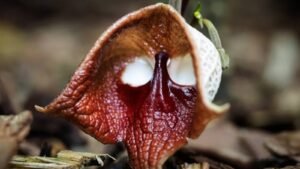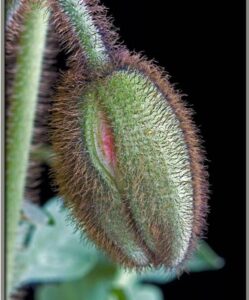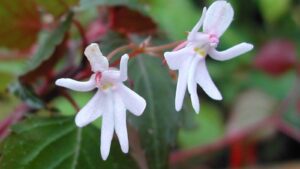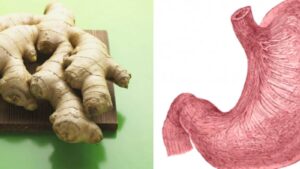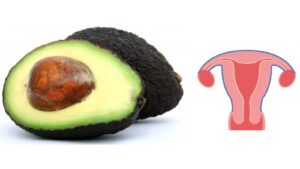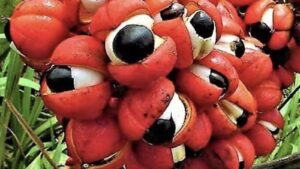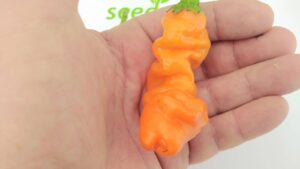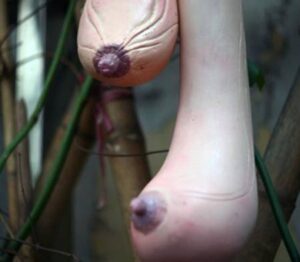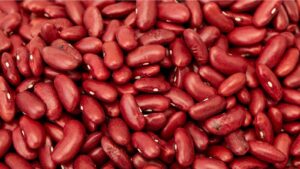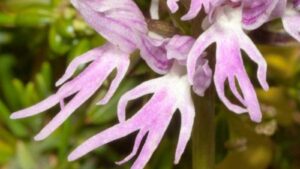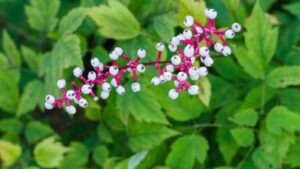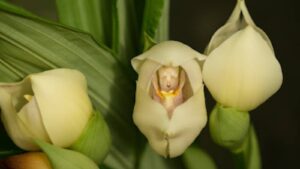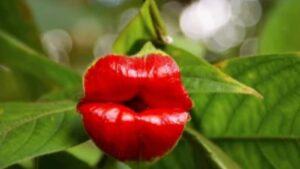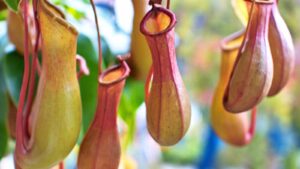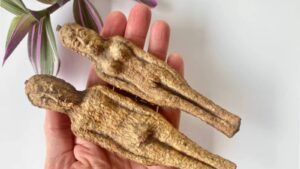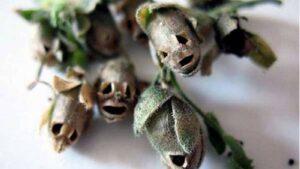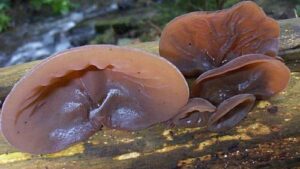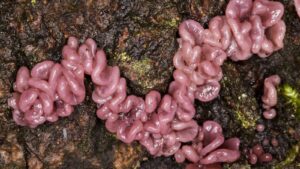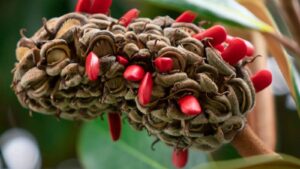Plants that Look Like Human Body Parts
Summary
Top 20 Plants that Look Like Human Body Parts. All plants don’t look fascinating and make us admire their beauty. Some are dangerous for humans or other living creatures, while others have an unusually strange and unique appearance. It is […]
Top 20 Plants that Look Like Human Body Parts. All plants don’t look fascinating and make us admire their beauty. Some are dangerous for humans or other living creatures, while others have an unusually strange and unique appearance. It is always very interesting to get acquainted with unique plants. You will be amazed to see some plants that have an appearance of humans. In this video, we are going to talk about the top 20 plants that look like human body parts.
Video: Plants that Look Like Human Body Parts
Aristolochia Pipevine
Like many plants that grow in challenging environments, the weird, corpse-like appearance of Darth Vader pipevine flowers is due to adaptations that ensure their survival. The helmet-like shape and purple coloration of the blooms, combined with the powerful aroma of rotting flesh, tend to attract insect pollinators. The inside of the blooms is lined with sticky hairs that imprison the unfortunate guests long enough to cover them with pollen. If you want to see Darth Vader flowers, your best bet may be a greenhouse or botanical garden, such as Japan’s Kyoto Botanical Garden.
Icelandic Poppy
The Iceland poppy plant provides showy blossoms in late spring and early summer. One of the most amazing facts about flowers is that it looks like female body parts while blooming. Iceland poppy flowers attract birds, butterflies, and bees. The flowers of the Iceland poppy plant are usually red and orange and reach 2 feet in height and the same in spread. Colors of white, yellow and red are available in more than 80 varieties of the Iceland poppy flower, as are varying heights. You can decide for yourself what this plant resembles.
Video: Plants that Look Like Human Body Parts
Impatiens Bequaertii
Isn’t this outrageous? It doesn’t have a common name, but some call it Impatiens! Impatiens bequaertii is a rare species in the nature of East Africa. This petite plant is only about one foot long, and the flowers are almost 1/2 inch long, but its charming shape makes up for this defect! The petals look like a little girl, wearing a skirt with arms outstretched. These white or light pink flowers appear all year round, and the leaves are also very attractive to me.
Ginger
They have a pale, thin skin that requires no peeling, is very tender, and has a milder flavor. It can be grated, chopped, or julienned for use. Mature ginger root has a tough skin that must be peeled away to get to the fibrous flesh and is usually grated, chopped, or ground for use.
People with stomach aches only need to drink a glass of ginger beer to know that ginger juice has anti-nausea effects. Every ginger has its unique shape. Some of them can resemble a part of a human body, especially a stomach.
Avocado
While most fruit consists primarily of carbohydrates, avocado is high in healthy fats.
Numerous studies show that it has powerful health benefits.
Avocado is a stone fruit with a soft texture that can be grown in warm climates. Their potential health benefits include improving digestion, reducing the risk of depression, and preventing cancer.
The bulb of avocado looks like a uterus, and it also supports reproductive health. “Avocados are a good source of folic acid,” said Elizabeth Summer, a registered dietitian and author of The Way to Eating Happiness.
Walnut
To say that walnuts are a nutritious food is an understatement. Walnuts provide healthy fats, fiber, vitamins, and minerals—but this is just the beginning of how they can support your health.
The wrinkles of walnuts are reminiscent of another human organ: the brain. The shape of the nut is even similar to the body part, and it looks like it has left and right hemispheres. Lisa Avellino, a nutritionist at the Focus28 Diet, said it’s no surprise that walnuts are nicknamed “brain foods.” “They contain a very high content of omega-3 fatty acids and help support brain function.”
Guarana
Guarana is a South American fruit that suspiciously looks like eyeballs. The fleshy white fruit is wrapped in dark brown seeds. These seeds are about the size of coffee beans, but they contain more than twice the caffeine content. As a supplement, guarana is considered “generally safe” by the US Food and Drug Administration. Guarana vine originated in the Amazon River basin, and the locals have long used its stimulating properties. A 17th-century Jesuit missionary pointed out that Guarana gave a member of the Amazon tribe “so much energy that they would not feel hungry day after day when hunting.”
Peter Pepper
Pepper is a family heirloom pepper, known for its unusual phallic shape. Despite the smirk on the outside, it is quite chili, reaching 30,000 Scoville Heat Units. Although chefs have used them more in various recipes over the years, they were once considered a kind of ornamental pepper. They are great to Salsa people! If you want to heat up a bit during your meal, Peter Pepper is a great choice for cooking. You only need to overcome the slight chuckle and keep it away from sensitive people, due to its resemblance to male body parts. They are very suitable for making sauces and hot sauces and exquisite spicy salsa.
Vietnam Milk Melon
Vietnam Milk Melon is a fruit that resembles a woman’s body parts. This popular plant has been all over the internet and websites like Reddit. In fact, it looks like a long melon or zucchini, as it’s elongated. However, the nude color and other details make it look like a female body part. It’s called Vietnam Milk Melon because it’s from Vietnam. Actually, it is not a real fruit or plant. In fact, it’s one of the many seed scams running online. It’s an artwork by a Vietnamese artist named Nguyen Thi Hoai Mo. The so-called milk melons are made from silicon, and they look so real that we thought we should include them on our list.
Kidney Beans
Another interesting fact is that the kidney bean got its name due to the resemblance it bears to real human kidneys. Kidney beans have significant amounts of fiber and soluble fiber. They are also very high in protein and iron.
Used in a variety of traditional dishes, kidney beans are usually eaten well cooked. Raw or improperly cooked kidney beans are toxic, but well-prepared beans can be a healthy component of a well-balanced diet.
They come in a variety of colors and patterns, including white, cream, black, red, purple, spotted, striped, and mottled.
Read More: People who gained superpowers after an accident
Orchis Italica
Orchis Italica, which looks like a human, grows up to 50 cm in height and has a rosette of distinctive wavy-margined leaves at the base of the plant. The leaves are sometimes flecked with brown. There are a further 3 or 4 small leaves sheathing the stem. The flowers are carried in a dense inflorescence and are usually pale to dark pink.
From time to time pure white specimens occur, but they are rare.
This orchid grows in abandoned farmland, scrubby areas, and beside tracks and paths and is particularly numerous close to the coasts.
Actaea pachypoda
We have documented the lethality of Actaea pachypoda, but its white rectangular berries are the truly strange part of the plant. The berries are located at the end of the red stem, similar to the eyes. The sinister-looking berries are a warning. They have carcinogenic toxins and can immediately calm the heart muscle. Ingesting them can cause heart attacks and even death. The dark spots, or pupils, of the eyes are scars caused by the stem tip of the berry in the early stages of growth.
Anguloa Uniflora
The orchid species overall produces many amazing flowers, but probably none is more so than the Anguloa Uniflora, which has flowers that resemble swaddled babies.
Swaddled babies orchid is one of the largest plants at nearly 2 feet in height. The name refers to the appearance of a tiny baby swathed in blankets in the interior of the flower. Another name for the plant, tulip orchid, is indicated by the exterior of the plant before it opens up fully. The overlapping petals resemble a tulip flower.
Psychotria elata
Psychotria elata is a plant found in the tropical rainforests of Panama, Costa Rica, Colombia, and Ecuador in Central and South America. From December to March, bright red pieces—special leaves—look like wrinkled lips with lipstick. The ruby color lures pollinators such as hummingbirds and butterflies. When the slices are opened, they reveal small star-shaped flowers and oval berries. Psychotria elata is the most popular gift of love in Central America. Native Panamanians use this plant to treat respiratory problems.
Pitcher Plant
Pitcher plants resemble their name: they look like pitchers. Inside the elongated structure is a pool of water. Decaying insects that have been trapped inside, along with nectar from the “lid,” attract flies, beetles, butterflies, and other insects to the plant. The plant’s flowers are the color of raw meat, which further serves to attract flies. I think you can already guess which male body part it looks like.
While pitcher plants are popular houseplants, it is not a good idea to harvest them from the wild because some species have become extinct this way. Instead, you can obtain them through a nursery.
Nariphon Tree
A strange tree growing in Thailand appears to bear fruit in the exact shape of a young woman—and it’s all over the internet. But while many are amazed by the shape of the green fruits, others are less convinced by the confusing footage. In Buddhist mythology, a tree known as the Nariphon bears the fruit of young female creatures and is said to grow in the mythical forest called Himaphan. The story goes that the Buddhist God Indra made Indra create twelve of these special Nariphon trees. The fruits were all in the image of Indra’s beautiful wife. But neither are there images of the tree nor nature journals available in modern science. However, we found a similar fruit that describes where the fruit came from. The fruit is trapped into a case to make the special shape. Do you have any information about the tree? Let us know in the comment section.
Snapdragon Seed Pod
Get ready because this one is a true creepypasta. Snapdragons are annual flowers with dragon-like jaws that break when the sides are squeezed. It is believed that the goldfish grassland was originally a wildflower in Spain and Italy. Every part of snapdragon is poisonous. At the end of summer, the petals of the flowers withered and withered, revealing the green seed pods below. Over the next month, the pods turned brown and dried out until they burst suddenly, dispersing the seeds. Usually, the seeds fall out of the three holes at the bottom of the pod, making it look like a skull.
Auricularia auricula
Auricularia auricula is also called tree ear or jelly ear, with jelly-like flesh and cup-shaped, red-brown, ear-like bodies. It has small, very fine hairs and pulsates irregularly on the surface. They usually grow in groups on rotten or live trees. Its shape is similar to a cup-shaped fungus, but the black fungus is rubbery and not fragile. It has been proven that fungus can lower human cholesterol and reduce blood clotting. Since it is a popular delicacy in Japan and China, it may cause a low incidence of heart disease in the region.
Ascocoryne sarcoides
When the jelly-like Ascocoryne sarcoides first grows on a dead deciduous log, it appears as spherical lobes. Later, it flattens into a saucer shape. As the fungi gather in clusters, they press against one another to form a rope-like mass, looking like a tiny person had spilled their small intestines onto the wood. The image is enhanced when the fleshy surface of their bodies is moistened by dew or rain.
Read More: 20 STRANGE & INSANE Carnival Rides
Magnolia Pod
Magnolia seed pods, which resemble male body parts. Inside the berries, you’ll find the magnolia seeds. And when conditions are just right, you may find a magnolia seedling growing under a magnolia tree.
In addition to transplanting and growing a magnolia seedling, you can also try your hand at growing magnolias from seed. Propagating magnolia seeds takes a little extra effort because you can’t buy them in packets. Once the seeds dry out, they are no longer viable, so in order to grow a magnolia tree from seed, you have to harvest fresh seeds from the berries.
Which plant surprised you the most? Did you see any of these plants in real life? Let us know in the comments below.
